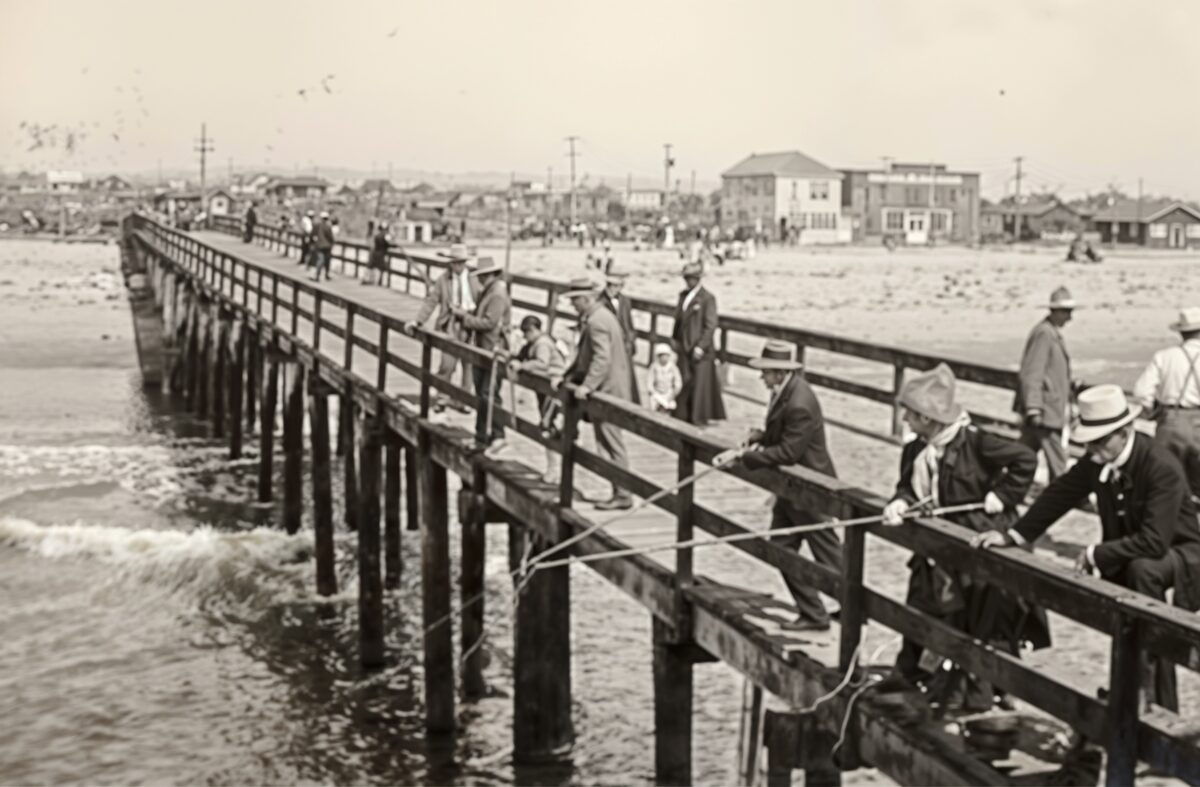My current historical fiction writing project is centered on a battle that took place in December of 1943 in Bari, Italy almost exactly two years after Pearl Harbor and featured a surprise attack by Nazi planes on an Allied base with eerily similar parallels and an equally horrendous outcome. Using actual newspapers from the time as sources, I’m still knee-deep in research on the topic—it’s rich in both history and drama—but I have made some of the characters slightly autobiographical and based them in Imperial Beach—my beloved hometown.
For those of you across the country who are unfamiliar with “IB” as it is universally known, here is an excerpt from my book, Swimming in Jello that I believe does a relatively good job of describing the town that will forever hold a place in my heart.
Imperial Beach is a small town tucked in one of the hintermost corners of America. This has earned it the singular distinction of being able to promote itself as “The Most Southwesterly City in the United States,” a claim that they have historically maximized at every turn and in every possible way. Imperial Beach is bordered by the Pacific Ocean to the west, Mexico to the south, restricted military property to the north, and to the east by a tiny strip of San Diego which inches like a tributary south from the rest of the big city basically straight down to Tijuana. We were therefore cut off from the rest of the world and unable to ever expand, a fact that has kept it relatively underfunded and underserved to this very day.
Imperial Beach, unknown by many and overlooked by virtually all residents of San Diego County, has an interesting if undistinguished history. Nestled nine miles south of downtown San Diego and literally touching the borders of Baja California, it first found its way on the map as a beach playground for those seeking to escape the heat of the inland Imperial Valley to the east (hence the name).
In 1887, real estate developer R. R. Morrison purchased the area—complete with a one-mile stretch of beach—to create a breezy, seaside retreat for wealthy farmers. The people came for summer-long vacations, bought property, built small, low-lying wooden houses with porches, and developed friendships based on the blazing sun, temperate zephyrs, and an endless supply of cheap Mexican cervezas.
There, in the evenings, they would watch the setting sun flicker on the ocean swells as dolphins frolicked in the surf and children ran screaming with glee from the crashing waves. With sand under their feet, and now quite impressive tans, they’d barbecue the day’s catch of halibut, bonito or shark. Mixed with the ever-present cilantro salsa fresca, the meal was scooped up with giant fresh tortillas and then washed down vigorously with blue agave tequila. The last swig, by tradition, involved swallowing the marinated worm that was included in each bottle. All would explode with laughter as mariachi-influenced guitar sounds followed and the nights slowly but surely drifted into dawn.
Against this backdrop, some chose to give up the farming life entirely and remain permanently in this beachside paradise, putting down their roots in humble Imperial Beach. By 1909 the first sidewalks were installed and eight years later the U.S. Army developed an aviation field nearby. Civic progress was soon like a runaway train. An ocean boardwalk and bathhouse were installed alongside a magnificent pier, which in turn launched a modest deep-sea fishing commercial enterprise. More importantly, it featured an unusual contraption known as the “Edwards Wave Motor” that was designed to generate sufficient electricity to serve the area’s needs. It didn’t and was subsequently sent to the scrapheap.
For me as a writer, however, Imperial Beach delivers a rich heritage to me and as I write on this early Saturday morning, I can almost smell the salt air and feel the sea breezes because those memories never leave even after seven decades.



